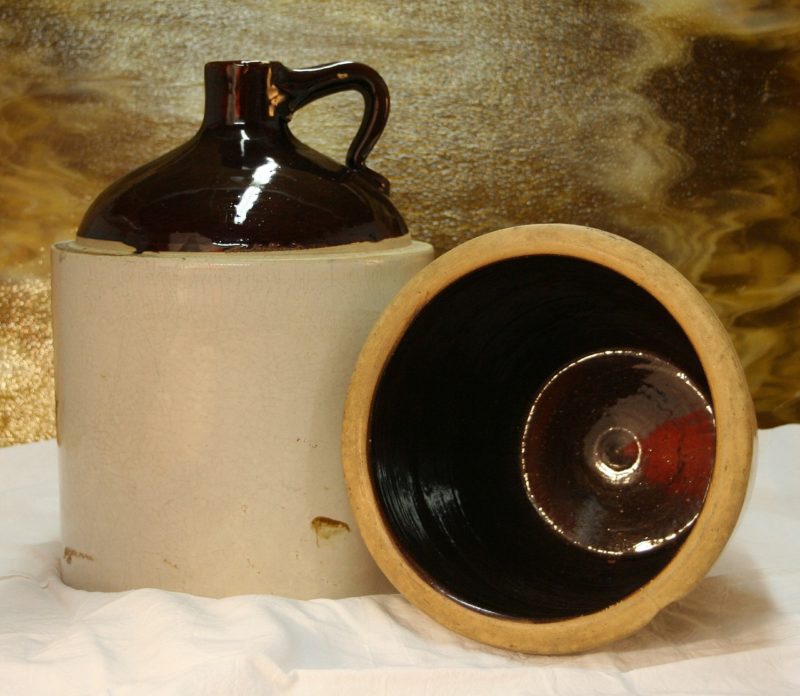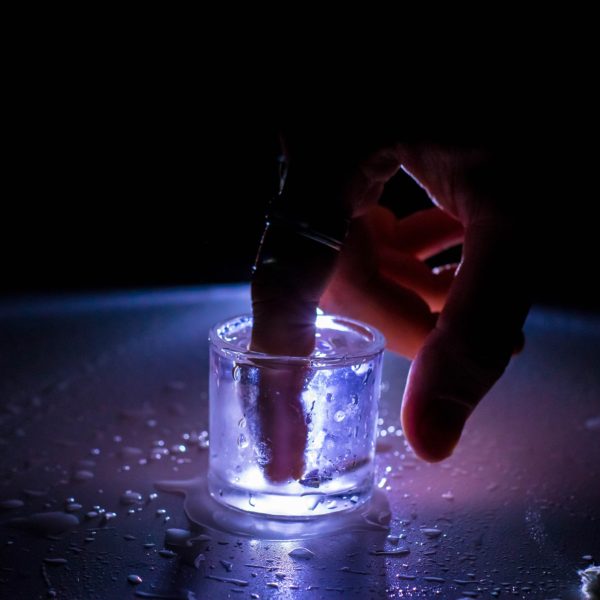How To Make Clear Moonshine
If you buy an item via links on this page, we may earn a commission. Our editorial content is not influenced by commissions. Read the full disclosure.
Have you ever watched the show "Moonshiners?" Personally, it's one of my guilty pleasures. I love the humor the cast finds in one another and out in the woods.
However, I also respect their ability to create a beverage and carry on a legacy that was instilled in most of them from a young age.
This is why I'm going to share with you how to make moonshine. Keep in mind, it's legal to own a moonshine still, but it's 100% illegal to distill any alcohol without a permit.
Disclaimer: The information provided here is for educational purposes only.
I became curious about the moonshine making process after watching the show and have done some research. I'm amazed at the science it takes to create this beverage.
Once you learn the process, it should give you a greater appreciation for the companies who distill the beverages you buy legally and certainly for the original moonshiners who figured out this process with little knowledge about science and in the woods no less.
Here's the process of making traditional corn whiskey:
It Requires:
- 5-gallons of water
- 8.5 pounds of cracked or flaked corn
- 1.5 pounds of crushed malted barley
1. Make the Mash

The process begins by heating 5-gallons of water to 165°F. When the temperature reaches this point, turn off the heat and add the full amount of corn to the water.
It's important to stir the corn consistently for 5 minutes. After the 5 minutes have passed, stir the corn every 30 seconds to a minute until the temperature has dropped to 152°F.
When the temperature reaches 152°F it's time to add the malted barley to the mixture. Once the barley has been added, cover the container and let it sit for an hour and a half.
However, during this time be sure to uncover the mixture every 15 minutes to stir. Replace the cover once you've stirred the mixture.
The goal for this part of the process is to successfully turn all the starches into sugar. By the end of the hour and a half, you should have confidence this goal has been met.
After the hour and a half is up, allow the mixture to sit for another 2-3 hours to finish cooling fully. You can mix the concoction up with an immersion blender to speed up the cooling process if you're in a hurry.
When the temperature reaches 70°F, sprinkle yeast over the entire mixture. Be sure the entire top has been covered. Without yeast, there's no fermentation. Without fermentation, there's no alcohol.
Obviously, this is an important step. When the yeast has been added, aeration is the next step. Pour the concoction back and forth between 2 containers until you are confident everything has been mixed and aerated well.
After aeration, place an airtight lid on the container holding your mash.
2. Allow the Mash to Ferment
Fermentation is the time when yeast works its magic and turns corn mash into alcohol. It's important the mash is left to rest for approximately 2 weeks.
At the end of the 2-week waiting period, wait 1 more week to ensure everything is breaking down as it should.
When 3 weeks have passed, open the lid to the container. You should smell alcohol and the mash should have a foamy appearance. This is letting you know the corn and barley have fermented.
Next, strain the mash. You should run everything through a large strainer or cheesecloth to remove any larger chunks of the mash or sediment. You don't want these items running through your still in the later steps.
When you feel confident you've removed all the sediment and large chunks of grain from the fermented liquid, pour the liquid into the still, and move on with the process.
3. Ready the Still

If you're making moonshine, I must assume you're a legal distributor. Therefore, you probably use your still on a regular basis.
Whether you use your still daily or not, it's important to clean it. You don't want any dust particles or dirt getting into the moonshine you've worked hard to make.
Different stills work differently and have different components. There are also different methods for operating stills too.
If you pack your column, now is the proper time to do this. Some people choose to pack their column because it creates higher alcohol proof.
If your still has a condenser, now is also the proper time to get water to the still for water input and output.
Once the still is set-up, the mash has been strained and added, you're ready to move forward in the process.
4. Start the Distilling Process

You'll begin this step by turning on the heat to the still. The desired temperature is 150°F. If your still has a condenser, you should turn on the water at this point in the process.
Turn the heat up to your still until you begin seeing alcohol being produced. Time the drips of alcohol as they come out.
When the alcohol is dripping 3-5 drips per second, you should turn the heat down.
A common misconception is distilling is what gives you alcohol. This isn't the case. Distilling is a chemical process that happens in the still. This process allows alcohol to be separated from the other chemical components in the still.
Therefore, this produces a pure alcoholic beverage people have been enjoying for centuries. The alcohol itself was created during the fermentation process by the reaction between the mash and the yeast.
Once the alcohol is flowing from your still, it's important to pay close attention to the next step. This is what separates the different distillers in this process.
5. The Different Parts of the Moonshine

Making moonshine is an art. The more you practice it (legally!) the better you become. However, what makes the difference in one person's moonshine to the next?
Well, this falls right into knowing the different parts of the product you're producing. Not only does understanding and identifying the different parts of moonshine produce a better product, but it also ensures the safety of the product as well.
The first 5% of the moonshine flowing from your still is known as the foreshots. This is a lethal product that contains methanol. It has been known to cause blindness and shouldn't be consumed.
The next 30% of the moonshine flowing from your still is known as the heads. The heads still contain methanol only in smaller amounts and smell like nail polish remover. This part of the product shouldn't be consumed either.
Though it doesn't cause blindness, in most cases, it can leave you feeling pretty rough in the morning. Better to play it safe, be patient, and wait on the quality product to be produced before consuming.
The 30% produced by the still after the heads are known as the hearts. This is the quality product you've been anxiously awaiting. You'll realize you've reached the hearts by the sweet aroma it produces.
Finally, the end of the run is known as the tails. This part won't smell as sweet and if you touch it, you'll realize it has a slick feel on your hands.
The slickness comes in because the amount of ethanol has drastically decreased, and water, carbs, and proteins have taken over.
Also, you might notice you've reached the tails in the run because you'll begin to see an oily film developing on the top of the product.
6. Knowing the Difference
I've explained how you make a mash for moonshine, the fermentation process, and the distilling process. I've also covered the different parts of the moonshine product.
Still, what separates two different distilleries in flavor?
Well, the recipe could vary slightly which will produce a different flavored product. Even so, the greatest thing which separates the quality of moonshine between two different moonshiners is the ability to separate the moonshine.
For instance, you noticed in the previous step how I told you to smell the product to know which step of the process you're in.
Well, the more you make moonshine the easier it becomes to separate the product out with greater accuracy. The purer the product, the better the flavor.
As you gain confidence in smelling the difference between the point where the heads stop and the hearts begin, the better flavor you'll be able to produce.
Again, this will take time and practice, but with both of these investments, you should see an improvement. Also, don't be shy to seek out a mentor. Moonshining still exists because of people mentoring others in this art.
However, I must reiterate, only seek out a legal mentor. Without a permit, no matter how small the amount of moonshine produced, you're still breaking the law.
Well, you now know how to produce moonshine and hopefully, have a better understanding of the skill required to become a better moonshiner over time.
It isn't our hope nor intention to encourage illegal moonshining, but we do hope you have a greater understanding of the process legal distributors must go through to bring you a beverage you love.
Also, after researching this process, it gave me a much greater appreciation for the 'original moonshiners.' It's our hope you'll share the same respect for the knowledge they were able to gain and pass down without the help of modern technology or (in many cases) formal education.
Was this article helpful?
Yes No
How To Make Clear Moonshine
Source: https://morningchores.com/how-to-make-moonshine/
Posted by: hartidowed.blogspot.com


0 Response to "How To Make Clear Moonshine"
Post a Comment